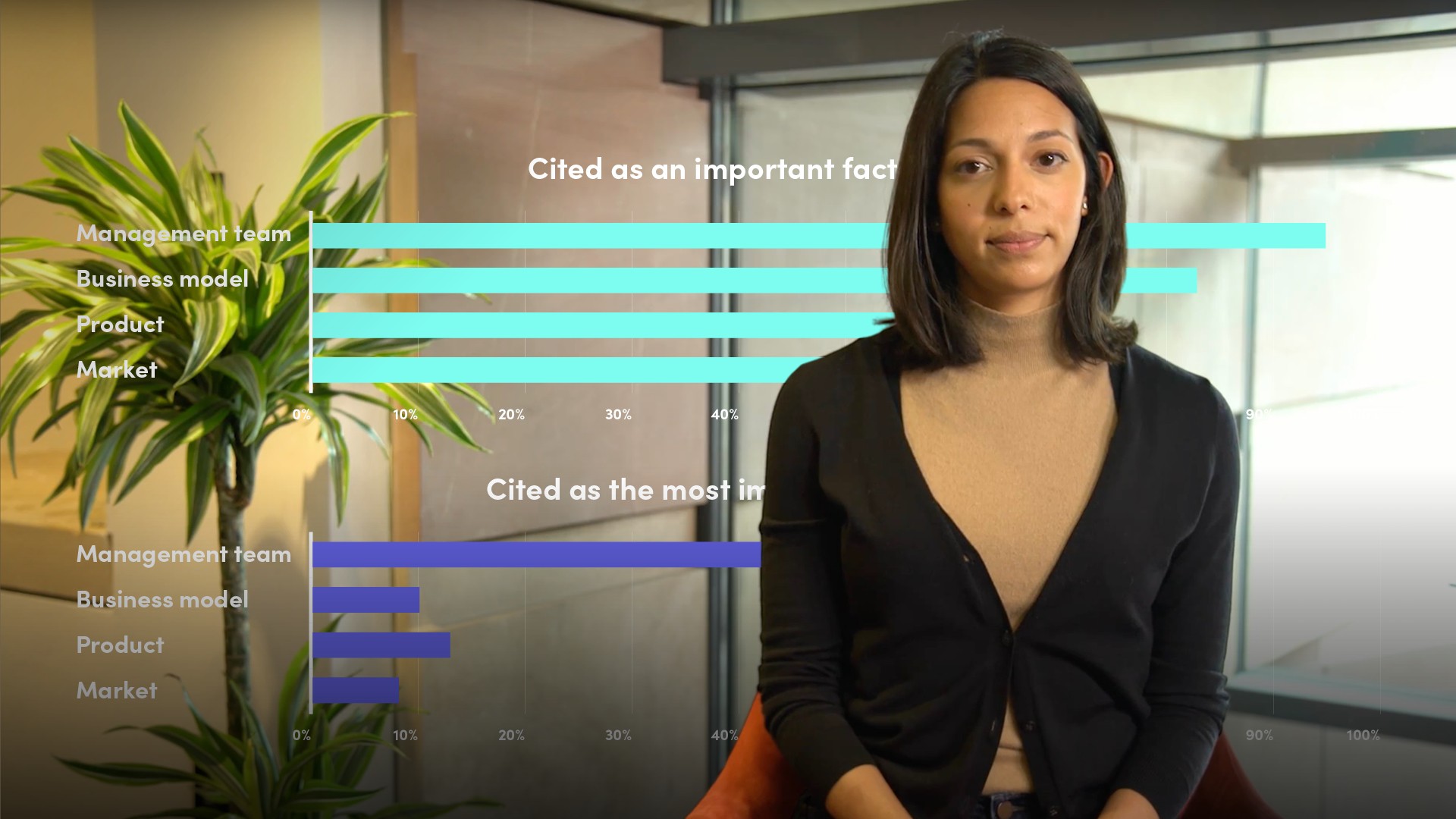
How does Venture Capital analyse an investment?

Alexandra Perez
Early stage business funding specialist
When valuing early-stage businesses, analysts cannot rely on things like discounted cash flow figures as companies at seed stage usually have not yet made revenue. Alexandra discusses the three pillars that venture capitalists look at when evaluating investment opportunities: Product, Market, and the Team.
When valuing early-stage businesses, analysts cannot rely on things like discounted cash flow figures as companies at seed stage usually have not yet made revenue. Alexandra discusses the three pillars that venture capitalists look at when evaluating investment opportunities: Product, Market, and the Team.

How does Venture Capital analyse an investment?
8 mins 59 secs
Key learning objectives:
What do venture capitalists look for in investments? What are Porter’s Five Forces?
What are the key criteria VCs use for selecting investments?
What do VCs look for in founders?
How do VCs measure market size? What are TAM, SAM and SOM?
Overview:
Venture capital or ‘VC’ is a type of private equity financing provided by firms or funds to early-stage emerging ventures deemed to have high-growth potential. VC evaluations of investment opportunities most commonly revolve around a three-pillar analysis: product, market, and founders/team. VC investments are deemed to be high-yield and have high rates of failure.
What do venture capitalists look for in weighing up investments? What are Porter’s Five Forces?
A product that addresses a customer need or solves a problem. At the core of every investment is an assessment of:- The proposed solution (i.e. the product-market fit), scientific or technical innovations it utilises to make the solution better than previous or existing solutions and which can be protected
- The competition –other companies and products or alternatives
- The product’s economic viability
- The longevity of the innovative advantage
- The product’s inimitability and possible protection through trademarks and patents
What are the key criteria VCs use for selecting investments?
According to a recent survey of 885 venture capital firms, the key criteria for selecting investments were:- The team (46%)
- The product fit (14%)
- The product (13%)
- The business model (10%)
- The market (8%)
- The industry (6%)
- Ability to add value (2%)
- Valuation (1%)
What do VCs look for in founders?
- Clear understanding of the problem they are trying to solve
- A passion to solve it and an ability to articulate it
- Evidence of success, be it academic, professional, athletic, or beyond
- Previous entrepreneurial experience (successful or not)
- Technical knowledge, if the product involves a technology
- Humility and flexibility, how well the founder takes feedback and executes on it, while remaining rigid on the value of the company
- Team dynamics and team interaction during meetings
How do VCs measure market size? What are TAM, SAM and SOM?
Market size and accessibility are critical because VCs often solely target companies they believe will become billion-dollar businesses a.k.a. unicorns. The size of a market is commonly measured in three ways:- The Total Addressable Market (TAM) – calculated using a top-down approach, bottom-up approach, and value theory
- The Serviced Addressable Market (SAM), the “customer” part of TAM that can actually be reached
- The Serviced Obtainable Market (SOM), which shows how much of the SAM can be realistically captured by a business in the short or medium-term

Alexandra Perez
There are no available Videos from "Alexandra Perez"

